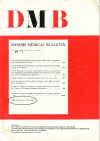口服抗凝治疗的自我管理——方法学和临床方面。
摘要
含有香豆素(维生素k拮抗剂)的口服抗凝治疗(OAT)用于血栓栓塞风险增加的患者的预防和治疗。OAT有一个狭窄的治疗指数,监测是基于国际标准化比率(INR),通常由静脉穿刺获得的柠檬酸血浆测定。根据INR测量,卫生保健提供者确定香豆素(例如华法林)的适当剂量。OAT的优化管理提高了治疗质量。患者自我管理(PSM)是指患者主动参与自身治疗的新概念。OAT中的PSM意味着患者使用便携式凝血仪(INR-monitor)分析一滴血。凝血仪显示INR,病人用它来表示香豆素的剂量。目前尚不清楚哪一部分患者(根据OAT的适应症、年龄、合并症等)可能受益于PSM,以及这种潜在影响有多大。香豆素正确剂量的先决条件是对INR的正确估计,在这种情况下,用于提供INR测量的方法和设备是必不可少的。用于PSM的凝固计在精度和一致性方面还没有得到充分的研究,因此这是有必要的。INR已被证明足以调整剂量。INR水平是否能反映个体患者的整体止血能力或血栓形成潜力尚存疑问。连续校准自动凝血酶生成(CAT)和凝血因子活性的测量可以作为更敏感和全局的止血参数,并可能在预测OAT患者并发症风险方面具有更好的性能。我们发现凝血因子II、VII、IX、X和CAT的凝血活性在6周内没有变化。凝血因子和CAT活性与INR显著相关,因此这两项检测可与INR同时使用或互换使用。大约50%的凝血因子活性和CAT的总变异性由INR反映,而其余的变异性在受试者(患者)内部。因此,凝血因子活性和CAT可以潜在地用于提供出血和血栓栓塞风险的进一步信息,因为受试者体内几乎50%的变异性没有显示在INR值中。然而,这种方法是否能预测个别患者的OAT并发症仍不确定。为了得出关于临床结果的确切结论,需要更大的临床试验和更长的随访期,最好使用临床终点。然而,凝血因子活性和CAT的测量可能会改善处方OAT患者凝血活性的测量,超出目前临床可用的参数。发现用于PSM的CoaguChek S和XS凝血仪具有足够的精度。在准确性方面,与实验室相比,凝血仪上的INR测量值往往较低。凝结计上的大部分测量值与实验室测量值偏差超过15%。然而,只使用了一个实验室进行比较,并且没有使用世卫组织估算INR的原始方法(金标准)。此外,必须考虑到印度卢比的固有局限性,必须在这一背景下看待其结果。在这方面,凝血计的准确性似乎是可以接受的,它们可以在临床环境中使用。然而,外部质量控制是必不可少的。在观察性研究中,发现PSM是可行的,在各种适应症和广泛的患者年龄范围内提供满意的治疗质量。在一项随机对照试验中,使用有记录的盲法复合终点,发现PSM提供的治疗质量至少与传统管理提供的治疗质量一样好。此外,研究发现,与常规管理的患者相比,PSM的培训和实施导致INR测量的差异较小,中位INR更高,香豆素剂量更高。系统回顾和荟萃分析提供了进一步的证据,其中记录了PSM在高度选定的患者中至少与传统管理一样好,甚至可能更好。Oral anticoagulation therapy (OAT) with coumarins (vitamin K-antagonists) is prescribed for both prophylactic and therapeutic use to patients at increased risk of thromboembolism. OAT has a narrow therapeutic index, and monitoring is based on the International Normalized Ratio (INR) conventionally determined on citrated plasma obtained by venepuncture. Based on the INR measurements, health care providers determine the appropriate dose of coumarins (e.g. warfarin (Marevan). Optimised management of OAT improves the quality of treatment. Patient self-management (PSM) is a new concept where the patient takes an active part in his or her own treatment. PSM in OAT implies that the patient analyses a drop of blood using a portable coagulometer (INR-monitor). The coagulometer displays the INR, which the patient uses for coumarins dosage. It is still not clarified which subset of patients (in terms of indication for OAT, age, co-morbidity etc.) that potentially will benefit from PSM, and how large this potential effect is. A precondition for a correct dosage of coumarins is a correct estimation of the INR, and the method and apparatus used for providing the INR measurements is in this context essential. The coagulometers used for PSM have not been investigated adequately in terms of precision and agreement, so this is warranted. INR has proven adequate for adjusting dosages. It is doubtful that the level of INR reflects the overall haemostatic capacity or thrombotic potential of individual patients. Measurement of continuous calibrated automated thrombin generation (CAT) and coagulation factors activities may serve as a more sensitive and global haemostatic parameter and potentially with better performance in predicting risk of complications in patients on OAT. We found that the clotting activity of coagulation factors II, VII, IX, and X and CAT exhibited no variability over a 6-week period. The activity of the coagulation factors and CAT was significantly associated with the INR, so these two tests can be used concomitantly and/or interchangeably with the INR. Approximately 50% of the total variability of the coagulation factor activities and CAT was reflected by the INR, whereas the remaining variability was within the subject (patient). Coagulation factor activities and CAT can therefore potentially be used to provide further information to the risk of bleeding and thromboembolism, since almost 50% of the variability within the subject is not displayed in the INR value. Yet it remains uncertain if this method can predict complications in individual patients on OAT. Larger clinical trials with a longer follow-up period, preferably using clinical endpoints, are needed in order to draw any firm conclusions regarding the clinical consequences. However, measurement of coagulation factor activities and CAT may improve measurement of coagulation activity in patients prescribed OAT beyond the parameters currently clinically available. The CoaguChek S and XS coagulometers used for PSM were found to have an adequate precision. Regarding the accuracy, the INR measurements tended to be lower on the coagulometers, compared with the laboratory. A large proportion of the measurements on the coagulometers deviated more than 15% from the laboratory measurements. However, only one laboratory was used for comparison and the original WHO method (gold standard) for estimating INR was not used. Furthermore, the inherent limitations of the INR have to be taken into consideration, and the results have to be viewed in this context. The accuracy of the coagulometers seems in this respect acceptable and they can be used in a clinical setting. However, external quality control is essential. In the observational studies, it was found that PSM was feasible and provides satisfactory treatment quality for various indications and in a wide range of patient age. In a randomised controlled trial, using a documented blinded composite endpoint, PSM was found to provide a treatment quality that was at least as good as that provided by conventional management. Additionally it was found, that training and implementation of PSM lead to a smaller variance in INR measurements, a higher median INR and a higher dose of coumarins compared to that obtained for conventionally managed patients. Further evidence was provided in a systematic review and meta-analysis, where it was documented, that PSM appears at least as good as and possibly better than conventional management in highly selected patients.

 求助内容:
求助内容: 应助结果提醒方式:
应助结果提醒方式:


